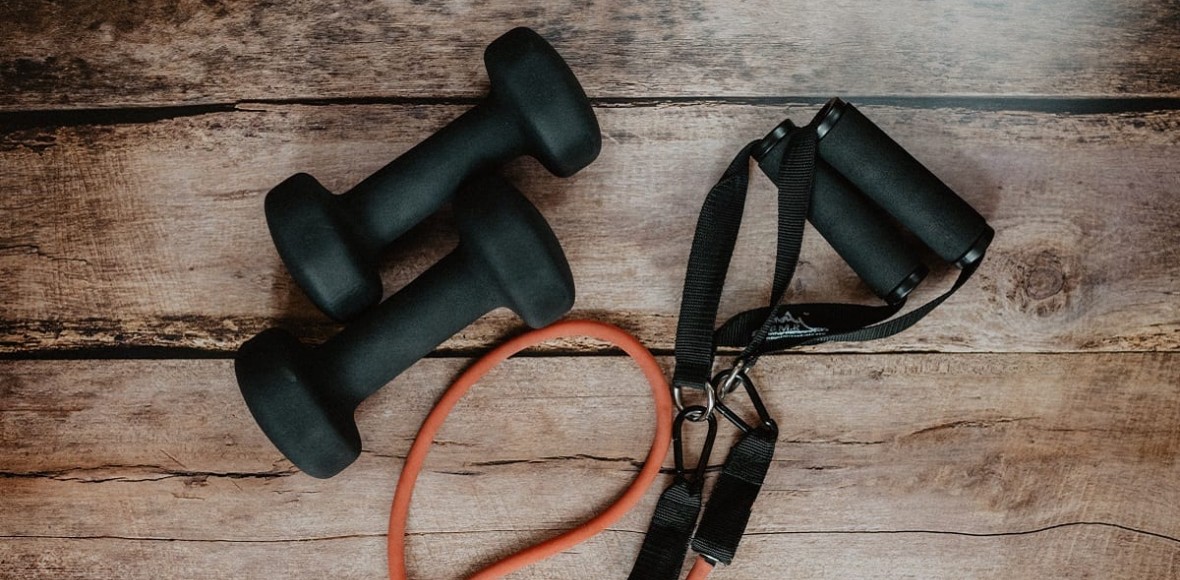Creating Your Awesome Home Gym
Creating Your Awesome Home Gym
To start with, you’re going to need to create your own home gym. This means finding the right equipment and stocking up your home, whether that’s a spare room, your living room or even a garage (which is just ideal!).
The exact equipment you’re going to need is going to depend largely on the goals of your workouts and what you’re trying to achieve.
The equipment you need to burn calories and lose weight for instance, is quite different from what you would use to build massive muscle.As we’re going to learn later in this book though, building muscle is actually still one of the key ways to burn fat. The more muscle you build, the more you’ll drive up your metabolism.
What you’ll find then is that there are certain things and certain principles that will apply no matter what your aims are. And there are definitely some specific pieces of equipment that everyone should own. Read on and let’s take a look at what some of those are and how you should approach this process.
What Makes a Good Home Gym?
You are once again going to be faced with some unique challenges here when you begin building your own home gym. The first of these is the simple fact that your home gym shouldn’t cost too much. If you’re relatively new to the gym and if you don’t have any equipment yet, it can be tempting to stock yourself up with everything you think you might ever need and end up spending a small fortune.
Likewise, you need to think about how you’re going to store your equipment. If you have a room dedicated to being your gym, then this latter point will be easy enough. But if you do not, then you need to think about how you can make a gym that will be easy to take apart and put back together on cue, or one that is simply small enough and compact enough that it doesn’t matter too much.
Oh and you also need to make sure you aren’t going to smash any cabinets or go through any tables. The best tip in this regard then is to start small and then build your way up. That means buying just a few items that you absolutely need to begin with but approaching them in a way that leaves you with the potential to expand and build upon that start.
Take dumbbells for example. Dumbbells are useful for practically every workout under the sun and can hit all manner of different body parts. But you’re going to need dumbbells that are heavy enough if you hope to really make an impact on your muscle growth. Of course ‘heavy enough’ depends not only on your current progress (which will change with time) but also on the move you’re doing.
Lateral dumbbell raises are difficult to perform with anything above 10kg, even for a trained athlete. Conversely though, 10kg would be incredibly light for doing dumbbell presses. So the way to approach this challenge is to start out with dumbbells that can be increased and decreased in size. This means you should be able to remove and add weights as the situation requires and as you build up.
Normally, you can get dumbbell sets for around $30 that let you increase the weight up to 20kg. This is a great starting point, or you might want to buy two lots of dumbbells, which will then allow you to build up further still.
This is just one example of how you can approach your home gym in a modular and compact way if necessary, while at the same time saving money.
Another example of something like this is the pull up bar. This is an incredibly unobtrusive item and one that will only cost you $10. You can even get pull up bars that don’t need drilling into the ground – they will simply fit over the door frame in order to fix into place! The best piece of equipment to upgrade your pull up bar? Gymnastic rings! Gymnastic rings are simply plastic rings that attach to rope and can be looped over a pull up bar.
These then allow you to perform ring dips, muscle ups, the iron cross, reverse push ups (pull ups from a lower height, with your legs touching the floor stretched out in front of you) and all manner of other things! The best thing about gymnastic rings is that they cost very little once again and they can be stored in.
A skipping rope meanwhile is a great alternative to a treadmill, while you can also do a surprising amount with a bull worker – a piece of metal that offers resistance when squeezed. As we’ll see in this article, there are likewise lots of things you can do with everyday items from around the home! So think a little outside the box, use these tips and the principles behind these tips and build yourself a gym that does everything you need it to without taking up all the space in your home!

